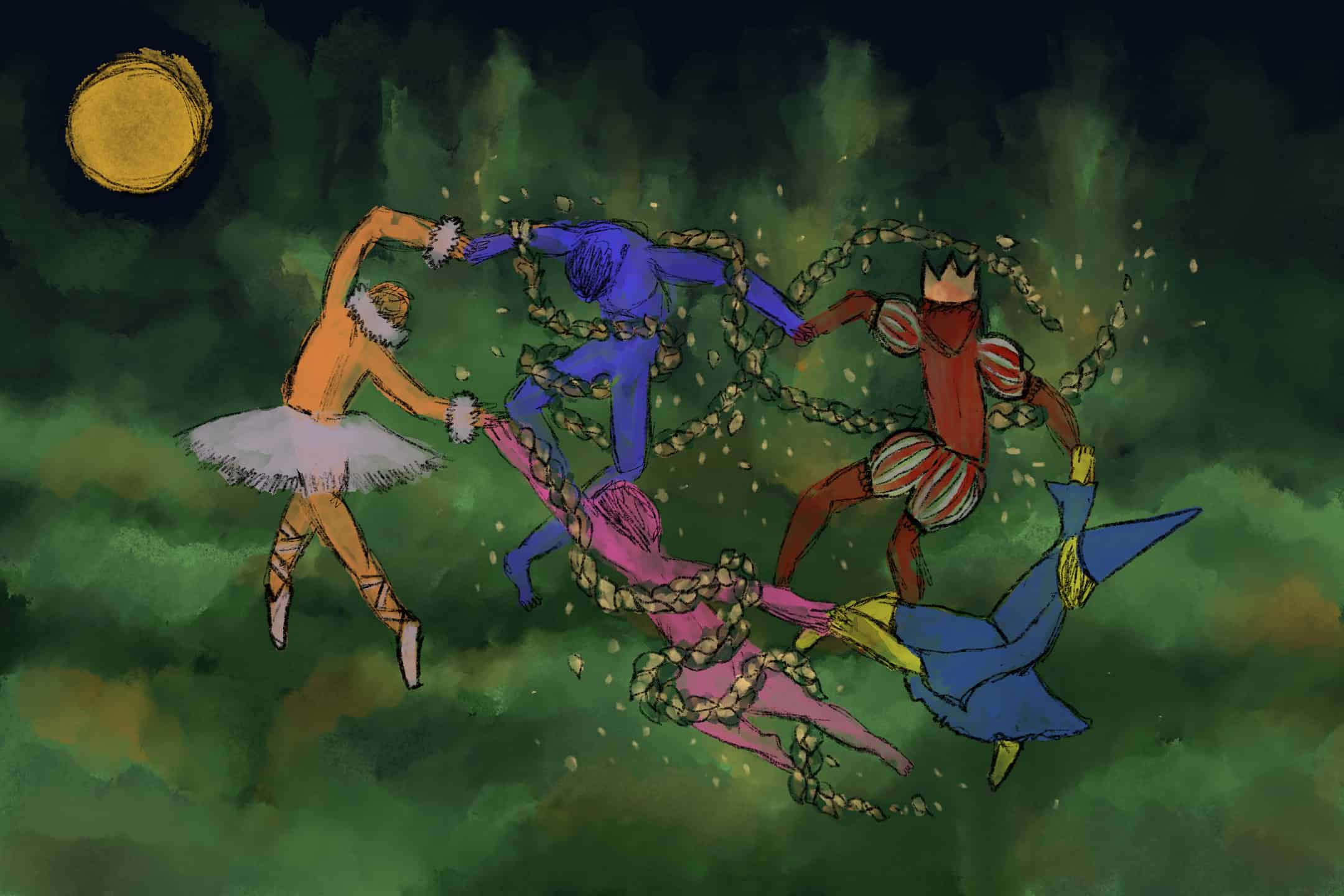Growing up in Jakarta, Indonesia — a sprawling, urban landscape where towering skyscrapers replaced the trees of the tropical rainforests — my encounters with nature never went beyond the occasional turf fields at my school and on family holidays. The concrete jungle was my norm, and forests were only familiar to me through novels and films, portrayed as mystical places that felt more like dreams than reality.
Though I remained far removed from the rainforests of Sumatra, the various species of Shorea, Ficus, and Dipterocarpus trees captivated me, becoming larger-than-life in the stories I read and the films I watched. They were places where characters went to hide, discover themselves, or confront the unknown.
As I reminisce about my childhood, I wonder what about these fictitious trees brought me comfort: Are they merely backdrops for Edward Cullen to show off his sparkly skin to Bella Swan in Twilight? Or do they hold a deeper significance?
The forest as a sanctuary
In many fictional stories, forests serve as sanctuaries, providing shelter and protection as characters escape danger or seek solace. These spaces appear to offer a natural retreat away from the chaos of the human world. The Shire in The Lord of the Rings franchise is an idyllic, forested location where hobbits can live their little lives in peace, protected from the forces that lurk beyond. Alternatively, in The Chronicles of Narnia franchise, the Pevensie children flee wartime Britain and fall upon a mystical kingdom through the doors of an enchanted wardrobe, where forests teem with magic, talking animals, and hidden — nay, mysterious — wonders.
These literary portrayals of green life evoked my desire for tranquillity — a place where I can find sanctuary from the anxieties, claustrophobia, and ceaseless noise of concrete jungle life and ultimately find myself. Forests in these stories are more than just collections of trees; they are safe havens where people, and perhaps we as readers and viewers, may recover our fundamental impulses and sense of belonging.
The forest as a liminal space
While forests may provide refuge, they also serve as liminal thresholds, spaces between two or more worlds and realities. Beyond the forest’s edge, the ordinary becomes extraordinary, the rules of reality break down, and protagonists encounter unknown, often otherworldly forces.
In horror films like The Blair Witch Project, a group of students explores a forest only to be overtaken by its terrifying force. Here, the woods symbolize terror and uncertainty: an unknown place with dark secrets where fantasy and horror collide, leading wanderers and thrill-seekers to succumb to disorientation, entrapment, and ultimately, violent consumption.
This portrayal challenges the romantic notion of nature as inherently benevolent and maternal, reminding us that, like humanity, the natural world can be both beautiful and terrifying; nurturing and capable of tremendous destruction. Such depictions serve as a caution, highlighting the potential consequences of underestimating nature’s power.
The forest as an ecological symbol
Contemporary stories place forests in a vital new role, representing our planet’s endangered ecosystems and the urgent need for environmental action towards reforestation and conservation. Richard Powers’ Pulitzer-winning novel, The Overstory, captures this with a haunting vision of ancient sentinels interconnected by vast, secret root networks amid the threat of human annihilation. Powers transform trees into characters striving for survival as civilization and climate crises ravage their habitat.
James Cameron’s film Avatar also depicts forests importantly as battlegrounds in the fight between human capitalist greed and conservationism. Pandora’s lush, biodiverse woods serve as both a home for its Indigenous people, the Na’vi, and a war zone, illustrating the existential stakes in environmental preservation. Meanwhile, human intervention corrupts nature, providing a terrifying reflection of what occurs when humans exploit the natural world.
These narratives personally compel me — and all of us — to understand our responsibility in nurturing or destroying the world’s valuable ecosystems. Forests are not merely literary emblems but actual metaphors for a planet in peril.
The forest as a cultural symbol
Forests are rich with cultural and spiritual meaning. They represent sacred spaces in several Indigenous traditions across the world, believed to be the dwelling places of ancestors, spirits, and Gods. These traditions cherish forests as sources of life, knowledge, and healing rather than merely as natural resources.
The forest also becomes a space for the characters to confront their inner selves and gain a better world perspective. Ursula K. Le Guin’s novella The Word for World is Forest focuses on the link between Indigenous cultures and their woods, delving into subjects such as colonization, environmental degradation, and cultural survival.
Such associations elevate forests from simple story backdrops into characters in their own right — places representative of shared memory and identity. As spaces of safety, profound metamorphic transformation, and mystery, forests embody our greatest fears and our aspirations for survival. These stories urge us to consider our wider relationship with nature in complex ways. They teach us that forests are more than just backgrounds for storytelling; they are living, breathing creatures that have influenced human consciousness for millennia and continue to do so today, both in fiction and reality.



No comments to display.